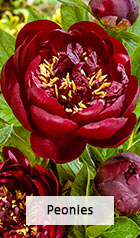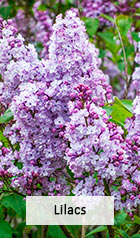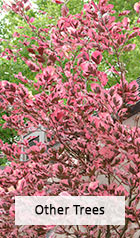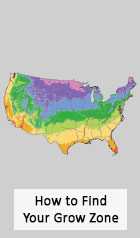- Fall Preview
- Perennials
Close X
Reliable color year after year.
- Bulbs
Close X
Fill your summer with blooms.
- Clematis & Vines
Close X
Provide ambiance and romance.
- Shrubs
Close X
Habitat, color & design possibilities.
- Trees
Close X
A gift for the next generation.
- Patio Orchard
- Fruits
- Tools & Décor
Close X
The right tools make gardening a pleasure.
- Spring Clearance
- Gardening Resources
Close X
Tips and tricks for easy, beautiful gardens.
Hardy Mum Perennials

Say hello to some of the biggest, most striking Chrysanthemums on the planet! If you're looking for more than a single season full of color, our astonishing hardy mums are just the flowering perennial for your garden! Well established mammoth mums will come back bigger, stronger and more spectacular every year!
Which mums grow back every year?
You might consider mums to be an annual: you buy a few orange, yellow, or pink mums each fall at a garden center, pop them into the ground or a favorite container, and toss them on the compost pile in November. However, nearly all mums can be grown as perennials in North America! When you grow your own Chrysanthemums, you'll have the option of choosing the very best, unique varieties for your garden. In addition, leaving mums to dry in the garden over winter adds attractive texture to your winter landscape.
Mums will have their best chance of survival if they're planted in the springtime and fertilized regularly (every two to three weeks) throughout the growing season. In spring, your Mums may produce early spring buds. Clip those buds back, to allow the plant to send its energy to foliage and fall flowers! By August, stop fertilizing your mums. As frost approaches, place a few inches of mulch or hay around the base of each plant, to protect the roots from frost. Then, sit back and enjoy your beautiful autumn blooms!
After the mums bloom in the fall, do not cut the branches of the mums back until spring. Undisturbed chrysanthemums have a better rate of survival through winter. When springtime rolls around, prune the dead foliage down to the roots. Re-plant your mums, or add fresh soil to their containers. Your mums will bounce back through the spring and summer, and rebloom in the fall!
How do you take care of Mammoth mums?
Mammoth series mums were developed by the University of Minnesota to withstand cold weather without lifting, pruning, or even much winterizing. Mammoth mums are a low maintenance dream!
To take care of your Mammoth mums, give them the best start possible by getting them into the ground in springtime. Mammoth mums need a bit of time before the cold sets in to establish a firm root system, so pop them into your garden, at the same level in which they were potted, as soon as they arrive. In most locations, that means you'll be planting in March or early April.
Choose a well-draining location with full sun -- these aren't shade plants, and they don't care for puddles or pooling water. Mammoth mums live up to their name: these plants grow to three to four feet across, so make sure to space them out appropriately. Remember that Mammoth mums perform best when allowed to keep their foliage through winter, so choose a location where you'll appreciate the added wintertime height!
Fertilize your mum plants with a balanced fertilizer in the spring and summer, and water them generously throughout their growing season. Fertilize for the last time in early August, or whenever fall buds begin to form. In the fall, there's little left to do -- sit back and enjoy your beautiful, HUGE mum flowers!
After they've finished blooming for the season, you don't need to deadhead or cut back your Mammoth mums. They'll perform best if allowed to retain their foliage until spring. When springtime rolls around, cut off the browned foliage and branches back to the crown of the plant. Mammoth mums do require dividing every three to four years.
What type of mums are perennials?
Some mums are hardier than others. Chrysanthemum morifolium, also called hardy garden mums, tend to survive the winter better than smaller, more delicate varieties. Hardy mums, including these Mammoth varieties, come back year after year, and can be divided to create even bigger and bolder displays.
Our mammoth mums are hardy in zones 3 through 4: meaning that they can survive pretty cold winters with little assistance! Mammoth mums were actually developed by gardeners at the University of Minnesota, a place notorious for its cold winters. Even though cold snaps may kill some mum varieties, mammoth mums will bounce back quickly.
Are chrysanthemums easy to grow?
While some chrysanthemums are high-maintenance -- requiring constant pruning and pinching back -- Mammoth mums are among the easiest perennials to grow. Not only do they maintain their shape naturally, they're designed to produce an abundance of blooms without pinching back. These mums also thrive without much overwintering -- if you're gardening in zone 3 or above, they'll happily bounce back year after year.
Should you deadhead mums?
While most mums require deadheading, pinching back, or pruning to maintain their domed shape, Mammoth Mums are unique in their low maintenance requirements. You don't need to pull flowers off of these plants in order for them to rebloom, and these mums do not grow leggy and wild without pinching. Mammoth mums really are the perfect low-maintenance chrysanthemum!
Are mums in the daisy family?
Daisies and mums do belong to the same family, Asteraceae, along with asters, sunflowers, zinnias, dahlias, heleniums, and marigolds. Asteraceae is a huge and important part of garden biodiversity, and includes both annual and perennial plants, as well as some vines, shrubs and trees. This huge family includes nearly 500 genuses in North America alone.

































